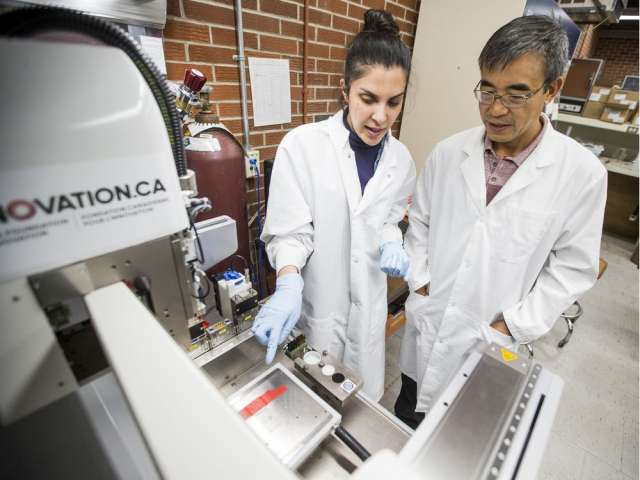
U of S team says 3D printer's tiny products may bring big changes
Researchers at the U of S are in the market for a 3D printer whose tiny products could help them make big steps in tissue regeneration.
By Zak Vescera | Saskatoon StarPhoenixMechanical engineering professor Daniel Chen (PhD'02) has spent more than 20 years studying the application of 3D printing in treating major injuries in human tissue — for body parts as large as a heart or as small as a nerve, as reported by the Saskatoon StarPhoenix.
He and his team use printers to create tiny organic “tissue scaffolds” that can be implanted into patients to create a “pathway” for healing that wouldn’t normally happen — like when the gap between damaged areas is too large.
“Let’s say you have a severed nerve in the finger,” Chen said. “Normally the surgeon can sew that together and the function can be recovered. But if the gap is too big, you need something to bridge it. That’s what we’re doing here.
“This concept comes from civil engineering — like a scaffold you would use to build a building.”
Instead of bricks and wood, Chen’s scaffolds are made of the host’s cellular tissue, fashioned layer by layer into a customized scaffold before it’s implanted back into the patient.
The technology is still a ways off from appearing at your local hospital, but that hasn’t stopped Chen’s lab and his team of 15 students from being at the forefront of its potential applications.
Read more at https://thestarphoenix.com/news/.

